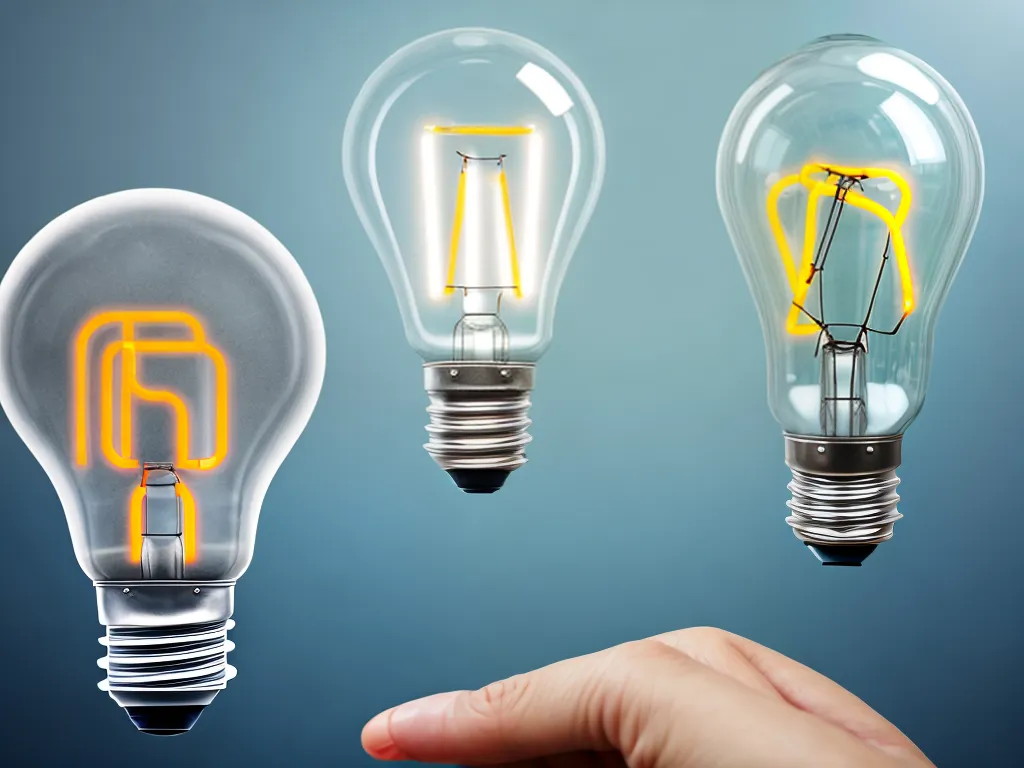
How to Save Money on Your Business's Energy Costs With LED Lighting
Introduction
Transitioning to LED lighting is one of the most impactful steps a business can take to reduce energy costs. LED bulbs use at least 75% less energy and last 25 times longer than incandescent bulbs. This means dramatically lower electricity bills and reduced maintenance costs for your business.
In this comprehensive guide, I will explain what LED lighting is, the benefits of switching to LEDs, how much money LEDs can save your business, and steps to take to smoothly transition your business to LED lighting. With some upfront investment and planning, LEDs can save your company thousands of dollars per year in energy and maintenance costs.
What is LED Lighting?
LED stands for "light emitting diode." LEDs are a technology that uses semiconductors to convert electricity into light.
Here are some key facts about LED lighting:
-
Energy Efficient - LEDs use at least 75% less energy than incandescent bulbs. They convert most energy to light instead of heat.
-
Long Lifespan - LED bulbs have an average lifespan of 25,000 to 50,000 hours compared to 1,000 hours for incandescent bulbs. They last 25+ times longer.
-
Durable - LEDs are durable and shock resistant. They are not damaged easily like other bulbs.
-
Directional Light - LEDs emit light in a specific direction, reducing wasted light and improving lighting focus.
-
Smart Technology - LED lighting can be paired with sensors and software for automation and data collection.
Benefits of Switching to LED Lighting
Transitioning to LED lighting delivers many benefits that directly impact your business's bottom line:
Lower Energy Bills
As LED bulbs consume 75% less electricity than incandescent bulbs, your business can realize big savings on monthly energy bills by going LED. Exact savings will vary based on energy rates and existing lighting, but cost reductions are significant.
Reduced Maintenance Costs
With their 25+ year lifespan, LED bulbs practically eliminate lighting maintenance costs. No more frequent bulb replacements and associated labor expenses. Your maintenance team can focus their time on more impactful tasks.
Improved Light Quality
LEDs provide superior lighting quality compared to fluorescent and incandescent bulbs. The light is evenly distributed, focused, and reduced glare. This creates better working environments for employees.
Tax Incentives & Rebates
Many utility companies and local governments offer rebates and tax incentives to help offset the upfront cost of LED lighting retrofits. Be sure to explore programs available for your business.
Enhanced Sustainability
LED lighting reduces a business's carbon footprint. Less energy use means lower greenhouse gas emissions. For companies focused on sustainability, LEDs are a big step forward.
How Much Money Can LEDs Save Your Business?
Exact cost savings will vary significantly based on your existing lighting and energy costs, but LED lighting produces major savings. Here are estimates on potential savings:
- Energy Bills - Most businesses reduce lighting electricity usage by 50-75% by switching to LEDs.
- Maintenance Costs - LEDs can eliminate 70-90% of lighting maintenance costs over their long lifespan.
- New Construction - Using LEDs instead of traditional bulbs can save 50-80% in lighting costs for new construction.
Many businesses find that new LED lighting pays for itself in 2-3 years through energy and maintenance savings. After that period, the savings are purely financial gains for your business.
For example, an industrial facility spends $100,000 per year powering metal halide lights. By retrofitting to LEDs, they reduce lighting electricity usage by 70% to $30,000 annually. After rebates and tax incentives, the retrofit pays for itself in under 2 years. After that, they net $70,000 in direct savings per year.
Steps to Transition Your Business to LED Lighting
Here is a step-by-step process I recommend to smoothly upgrade your business to energy efficient LED lighting:
1. Audit Existing Lighting
Conduct a lighting audit to analyze current bulbs, fixtures, controls and usage. This creates a baseline to compare LED options. Involve your electrical and facilities teams.
2. Research LED Options
With the audit data, determine the best LED products for your needs. Compare lumen output, energy use, pricing, and compatible fixtures. Consult with suppliers and contractors.
3. Calculate Costs & Savings
Work with suppliers and utilities to calculate all costs - bulbs, labor, disposal. Also project energy and maintenance savings in detail to get payback period.
4. Explore Incentives
Meet with your utility company to discuss available rebates, discounts and tax incentives to offset upgrade costs. These can have a major impact on ROI.
5. Create Retrofit Plan
Using all the data gathered, plan the full retrofit project. Phase upgrades over time if needed. Address training, disposal, controls, and measurements.
6. Install New LED Lighting
Remove old lighting and install new LED bulbs and fixtures per plan. Dispose of old bulbs properly. Thoroughly test new lighting.
7. Measure and Optimize
After installation, monitor energy usage and lighting quality. Make adjustments as needed to optimize the new LED system.
Conclusion
Upgrading to LED lighting requires an initial time and monetary investment, but the long-term savings are tremendous. Businesses can realize 50-80% reductions in lighting energy and maintenance costs by switching to LEDs. With smart planning, the upgrade pays for itself quickly. Then the savings keep building year after year as LEDs operate maintenance-free. Your company can put those extra funds to good use. Contact your lighting supplier and utility company to start your LED transition today!